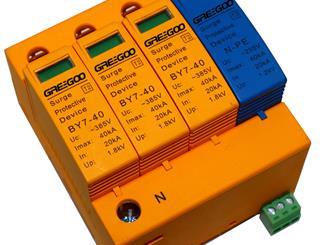How solid state relays work? Testing SSR with multimeter and wiring.
How solid state relays work?
Testing solid state relay with multimeter
Solid state relay wiring
- FASTON terminals connection SSR 1 phase ac switching SSR Relay
- What's the difference of Solid State Relay from Magnetic Contactor?
- Integrated IP20 touch-safe Solid State Relays
- DC SSR, Solid State Relay DC Load, DC/AC to DC SSR relay
- Low voltage drop DC SSR, charging and discharging DC SSR launched.
- Greegoo's motor reversing solid state relays introduction
- 1-Phase Solid State Contactors
- Plug in DC output solid state relays
- Plug in AC switching Solid State Relays
- 100A to 400A DC Solid State Relay special for frequency converters

What are the main differences between MOVs and Spark Gaps in SPDs?
An effective surge protection strategy often combines the use of both MOVs and spark gaps, along with other protective devices, to provide comprehensive protection against different levels of power surges.
Read More
Mini Puck Solid-State Relay: A Compact and Reliable High-Efficiency Switching Solution
The GF1 solid state relay uses back-to-back thyristors for switching, which are more durable than traditional triacs.
Read More
High frequency dc solid state relay, the application and features you may know.
10-1000Hz, 2400VDC, switching time is less than 0.25ms, mainly used for industrial control of DC high-voltage, high-current, high-power switching electrical equipment.
Read More
Solid-state relay parameter terms explanation in English.
Parameters terms explanation of SSR
Read More













